Jun Shimamura
Unsupervised Intrinsic Image Decomposition with LiDAR Intensity
Mar 28, 2023Abstract:Intrinsic image decomposition (IID) is the task that decomposes a natural image into albedo and shade. While IID is typically solved through supervised learning methods, it is not ideal due to the difficulty in observing ground truth albedo and shade in general scenes. Conversely, unsupervised learning methods are currently underperforming supervised learning methods since there are no criteria for solving the ill-posed problems. Recently, light detection and ranging (LiDAR) is widely used due to its ability to make highly precise distance measurements. Thus, we have focused on the utilization of LiDAR, especially LiDAR intensity, to address this issue. In this paper, we propose unsupervised intrinsic image decomposition with LiDAR intensity (IID-LI). Since the conventional unsupervised learning methods consist of image-to-image transformations, simply inputting LiDAR intensity is not an effective approach. Therefore, we design an intensity consistency loss that computes the error between LiDAR intensity and gray-scaled albedo to provide a criterion for the ill-posed problem. In addition, LiDAR intensity is difficult to handle due to its sparsity and occlusion, hence, a LiDAR intensity densification module is proposed. We verified the estimating quality using our own dataset, which include RGB images, LiDAR intensity and human judged annotations. As a result, we achieved an estimation accuracy that outperforms conventional unsupervised learning methods. Dataset link : (https://github.com/ntthilab-cv/NTT-intrinsic-dataset).
Non-learning Stereo-aided Depth Completion under Mis-projection via Selective Stereo Matching
Oct 04, 2022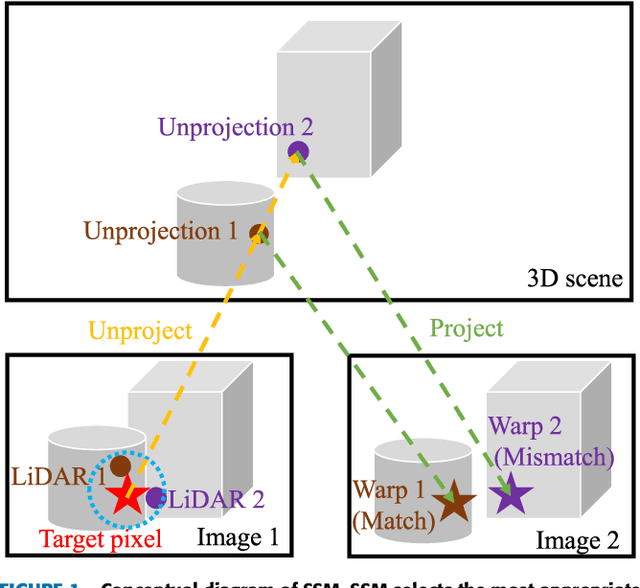

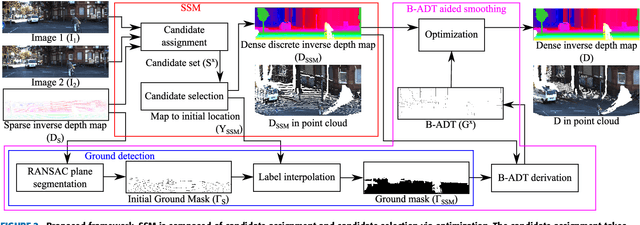
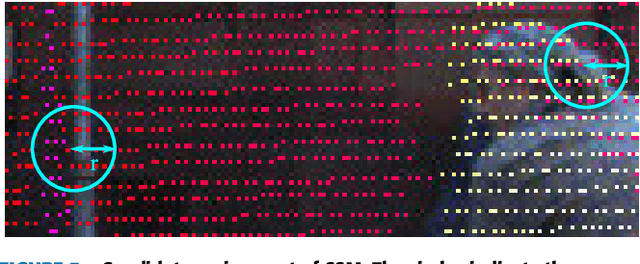
Abstract:We propose a non-learning depth completion method for a sparse depth map captured using a light detection and ranging (LiDAR) sensor guided by a pair of stereo images. Generally, conventional stereo-aided depth completion methods have two limiations. (i) They assume the given sparse depth map is accurately aligned to the input image, whereas the alignment is difficult to achieve in practice. (ii) They have limited accuracy in the long range because the depth is estimated by pixel disparity. To solve the abovementioned limitations, we propose selective stereo matching (SSM) that searches the most appropriate depth value for each image pixel from its neighborly projected LiDAR points based on an energy minimization framework. This depth selection approach can handle any type of mis-projection. Moreover, SSM has an advantage in terms of long-range depth accuracy because it directly uses the LiDAR measurement rather than the depth acquired from the stereo. SSM is a discrete process; thus, we apply variational smoothing with binary anisotropic diffusion tensor (B-ADT) to generate a continuous depth map while preserving depth discontinuity across object boundaries. Experimentally, compared with the previous state-of-the-art stereo-aided depth completion, the proposed method reduced the mean absolute error (MAE) of the depth estimation to 0.65 times and demonstrated approximately twice more accurate estimation in the long range. Moreover, under various LiDAR-camera calibration errors, the proposed method reduced the depth estimation MAE to 0.34-0.93 times from previous depth completion methods.
* 15 pages, 13 figures
Discontinuous and Smooth Depth Completion with Binary Anisotropic Diffusion Tensor
Jun 25, 2020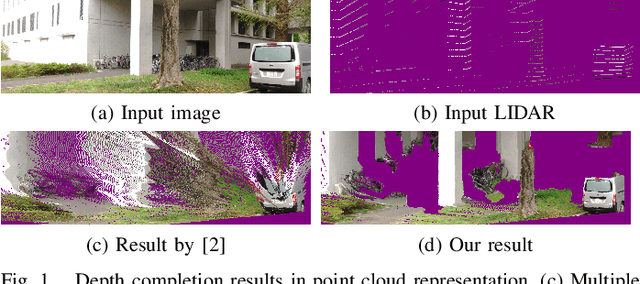
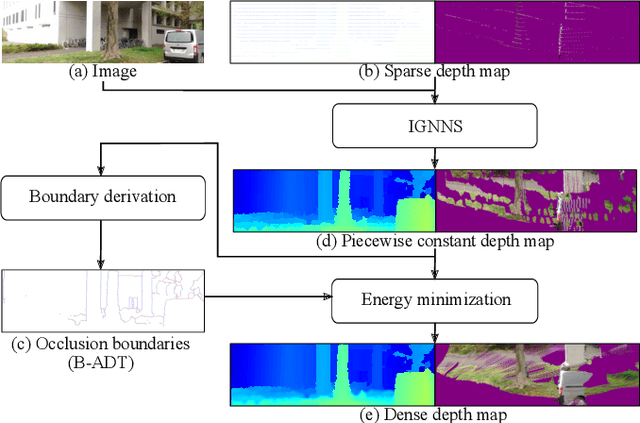

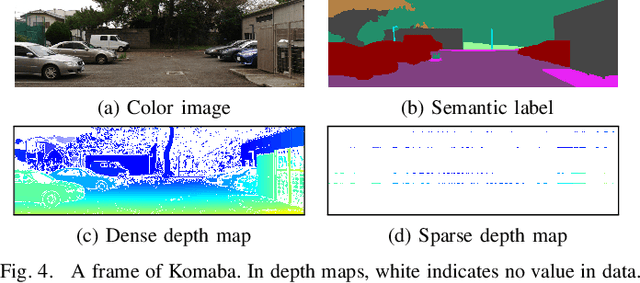
Abstract:We propose an unsupervised real-time dense depth completion from a sparse depth map guided by a single image. Our method generates a smooth depth map while preserving discontinuity between different objects. Our key idea is a Binary Anisotropic Diffusion Tensor (B-ADT) which can completely eliminate smoothness constraint at intended positions and directions by applying it to variational regularization. We also propose an Image-guided Nearest Neighbor Search (IGNNS) to derive a piecewise constant depth map which is used for B-ADT derivation and in the data term of the variational energy. Our experiments show that our method can outperform previous unsupervised and semi-supervised depth completion methods in terms of accuracy. Moreover, since our resulting depth map preserves the discontinuity between objects, the result can be converted to a visually plausible point cloud. This is remarkable since previous methods generate unnatural surface-like artifacts between discontinuous objects.
Concatenated Feature Pyramid Network for Instance Segmentation
Mar 16, 2019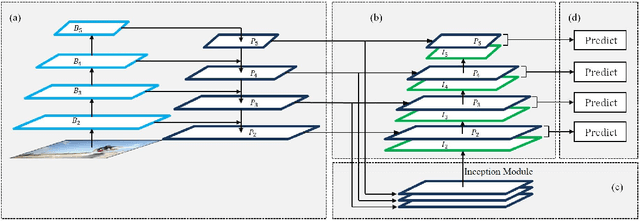

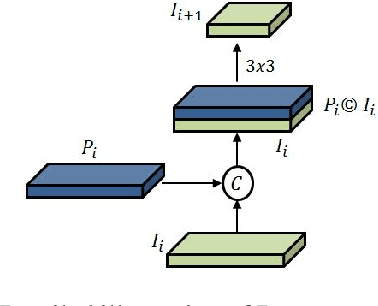
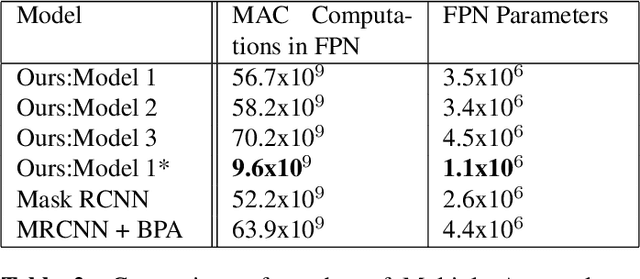
Abstract:Low level features like edges and textures play an important role in accurately localizing instances in neural networks. In this paper, we propose an architecture which improves feature pyramid networks commonly used instance segmentation networks by incorporating low level features in all layers of the pyramid in an optimal and efficient way. Specifically, we introduce a new layer which learns new correlations from feature maps of multiple feature pyramid levels holistically and enhances the semantic information of the feature pyramid to improve accuracy. Our architecture is simple to implement in instance segmentation or object detection frameworks to boost accuracy. Using this method in Mask RCNN, our model achieves consistent improvement in precision on COCO Dataset with the computational overhead compared to the original feature pyramid network.
Weakly Supervised Instance Segmentation Using Hybrid Network
Dec 12, 2018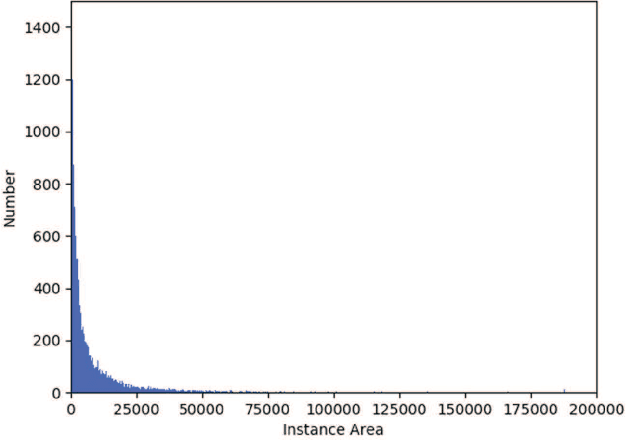
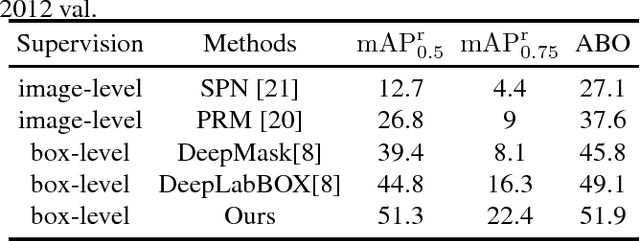
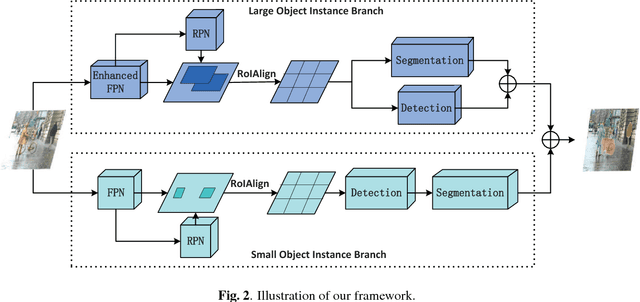
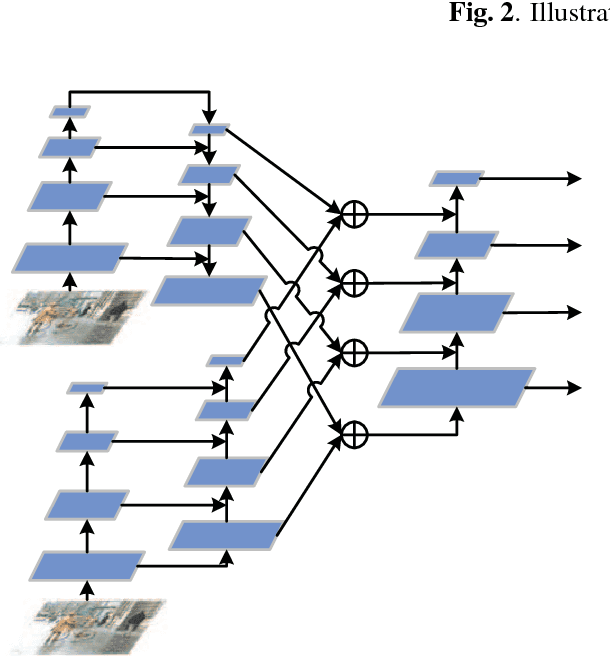
Abstract:Weakly-supervised instance segmentation, which could greatly save labor and time cost of pixel mask annotation, has attracted increasing attention in recent years. The commonly used pipeline firstly utilizes conventional image segmentation methods to automatically generate initial masks and then use them to train an off-the-shelf segmentation network in an iterative way. However, the initial generated masks usually contains a notable proportion of invalid masks which are mainly caused by small object instances. Directly using these initial masks to train segmentation model is harmful for the performance. To address this problem, we propose a hybrid network in this paper. In our architecture, there is a principle segmentation network which is used to handle the normal samples with valid generated masks. In addition, a complementary branch is added to handle the small and dim objects without valid masks. Experimental results indicate that our method can achieve significantly performance improvement both on the small object instances and large ones, and outperforms all state-of-the-art methods.
 Add to Chrome
Add to Chrome Add to Firefox
Add to Firefox Add to Edge
Add to Edge